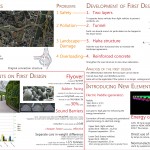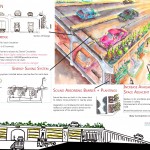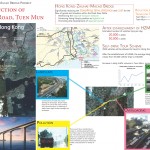Tuen Mun: Reconstruction of Tsing Tin Road
Authors. LEE Wan Fung Harry, LIU Chun Kit Tommy, KAI Wing Wai Emily
Our project aims at solving the problem brought to Tuen Mun by the establishment of Hong Kong-Zhuhai-Macau Bridge, HZMB.
The HZMB is a bridge linking Hong Kong, Zhuhai and Macau which will significantly reduce the travelling time and distance for the flow of goods and travellers between the areas by more than 50%. After the completion of HZMB construction in 2016, vehicles around the Zhu Jai Delta will also to get to Hong Kong in a much shorter time, it is estimated that the number of vehicles will be increased to 20,000 by then, and 50,000 vehicle trips in 2015. There will be a link from Tuen Mun to the airport directly. In other words, Tuen Mun will link the HZMB and existing cross boarder routes together, the overall shortened journey (Tuen Mun to airport/Tuen Mun to Zhuhai etc.) will increase the number of vehicles passing Tuen Mun by about 70%. Such a high traffic volume will cause several problems to Tuen Mun areas, e.g. pollution, landscape damage, overload and safety. Regarding these problems, improvements have to be made, Tsing Tin Road is the section of road where we will do our improvements.
In our project, we designed a double-decker bridge, which is cheaper than a tunnel, to separate heavy and light vehicles so that accidents caused by heavy vehicles can be reduced. To tackle the pollution problems, pavement of the bridge will be made of recycled rubber to reduce noise pollution. From our research, this can increase the road’s lifetime by three times and reduce noise by 30%. Sound barriers will also be built on the lower deck. They will be in semicylindrical shapes filled with recycled rubber from recycled tyres. This material can reduce noise up to 10dB and reduce CO2 emissions by replacing ordinary materials. Vegetation will be planted on the outside of the sound barrier to help reduce air pollution and enhance the appearance of the system.
Paddle electricity generators will be implemented below road surfaces on both decks. Electricity will be generated by the system when passing-by vehicles press down the paddles and drive the turbine. Electricity will be directly transmitted to support the lamps instead of storing it up to avoid energy loss. It is presumed that the power will be at least enough for operation in day time.




